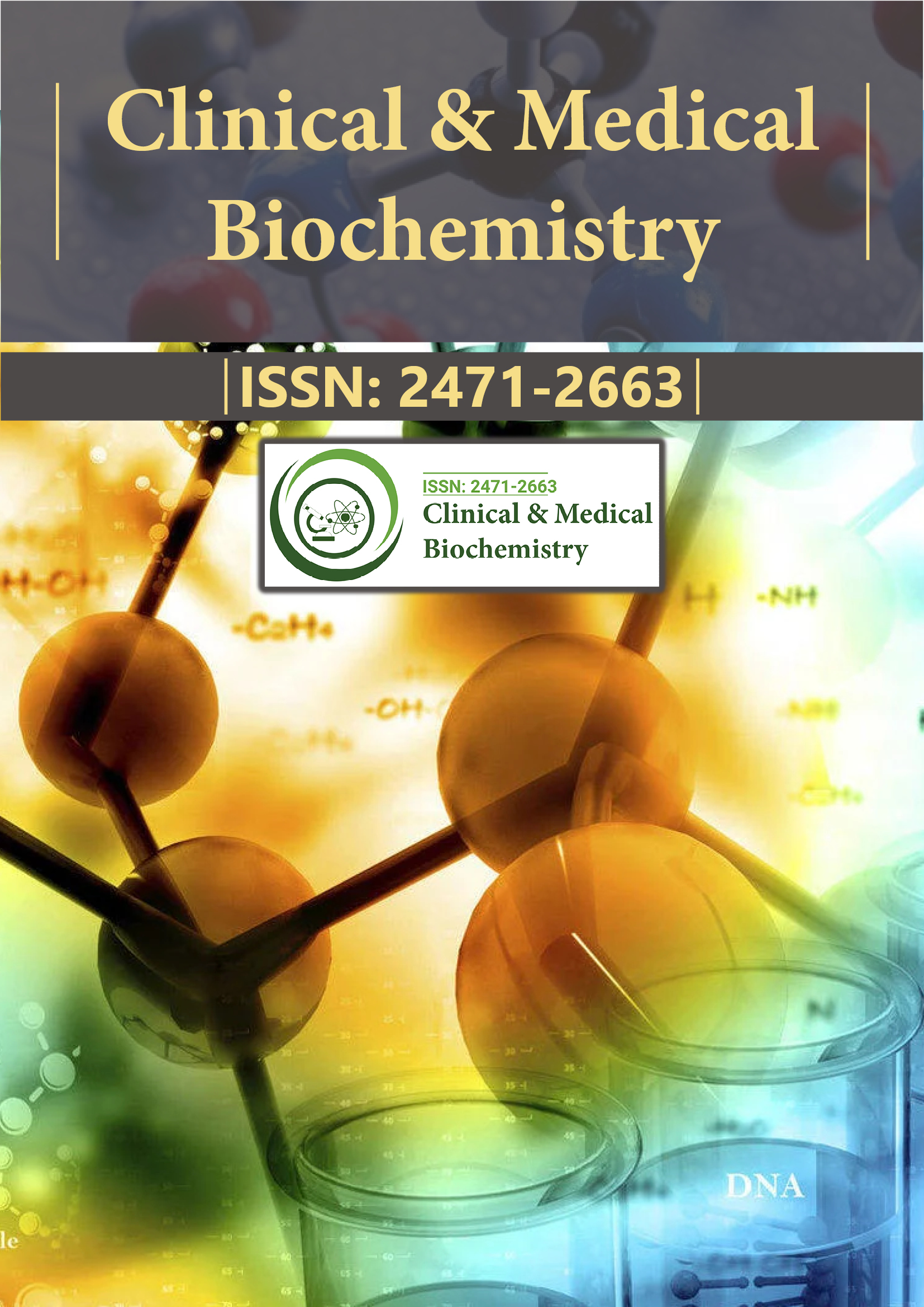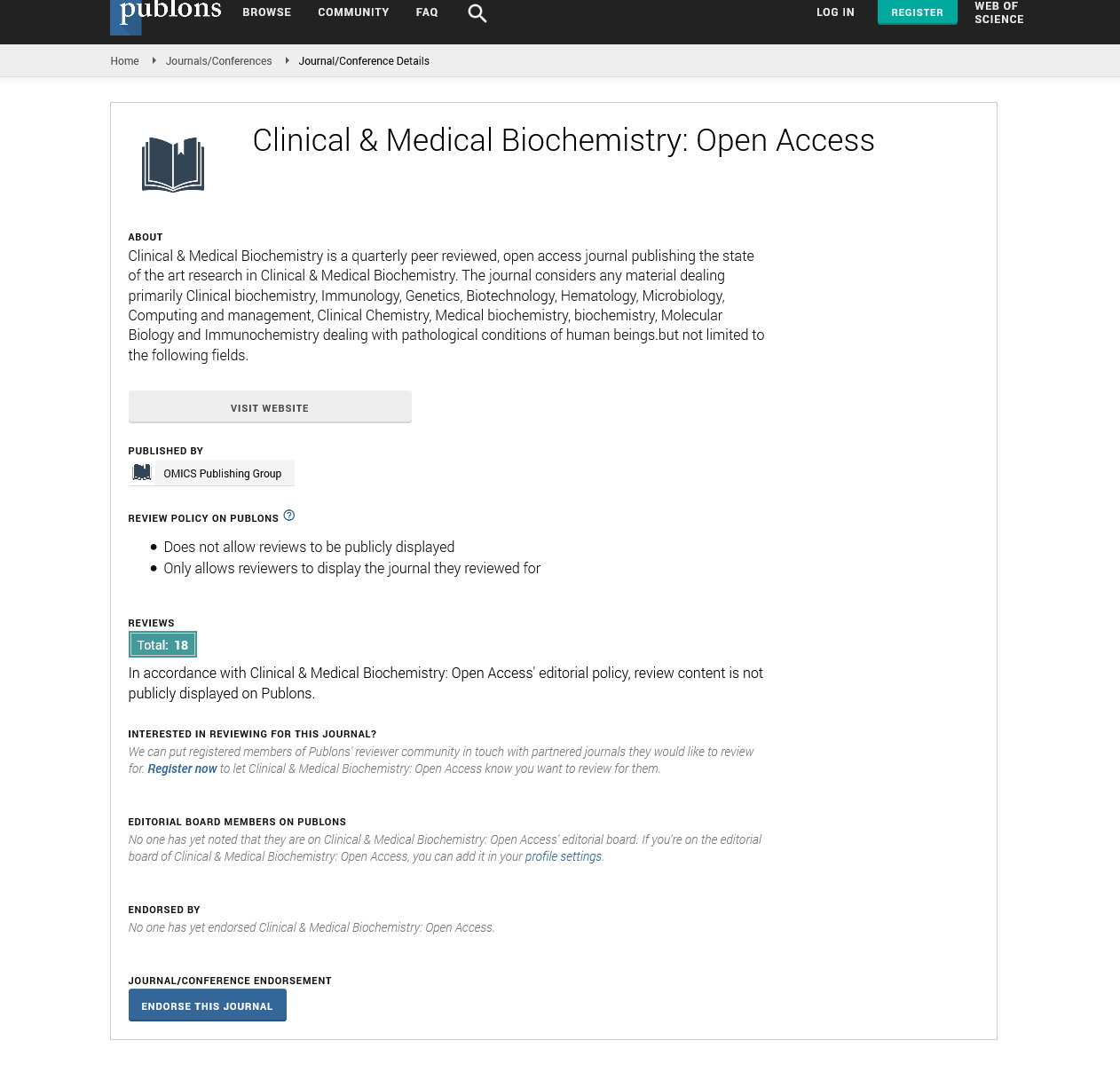Indexed In
- RefSeek
- Directory of Research Journal Indexing (DRJI)
- Hamdard University
- EBSCO A-Z
- OCLC- WorldCat
- Scholarsteer
- Publons
- Euro Pub
- Google Scholar
Useful Links
Share This Page
Journal Flyer

Open Access Journals
- Agri and Aquaculture
- Biochemistry
- Bioinformatics & Systems Biology
- Business & Management
- Chemistry
- Clinical Sciences
- Engineering
- Food & Nutrition
- General Science
- Genetics & Molecular Biology
- Immunology & Microbiology
- Medical Sciences
- Neuroscience & Psychology
- Nursing & Health Care
- Pharmaceutical Sciences
Short Communication - (2025) Volume 11, Issue 1
Body Converts Carbohydrates into Energy through Metabolic Pathways for Daily Functioning and Health
Rudler Cordoba*Received: 26-Feb-2025, Manuscript No. CMBO-25-29226; Editor assigned: 28-Feb-2025, Pre QC No. CMBO-25-29226; Reviewed: 14-Mar-2025, QC No. CMBO-25-29226; Revised: 21-Mar-2025, Manuscript No. CMBO-25-29226; Published: 28-Mar-2025, DOI: 10.35841/2471-2663.25.11.237
Description
Carbohydrate metabolism is the biochemical process by which our bodies convert carbohydrates into usable energy. Carbohydrates, found in foods such as bread, rice, fruits and vegetables, are one of the three macronutrients essential to human health, alongside proteins and fats. Once consumed, these carbohydrates are broken down into simpler sugars, primarily glucose, which the body uses as a key energy source for cellular activity. Understanding the pathways involved in carbohydrate metabolism is vital for recognizing how our bodies generate energy and maintain metabolic balance.
Carbohydrate metabolism begins with digestion. When carbohydrate-rich foods are ingested, enzymes in the mouth, particularly salivary amylase, begin breaking down complex polysaccharides like starch into smaller molecules. As the food travels through the digestive system, pancreatic amylase continues this breakdown in the small intestine. The resulting monosaccharides mainly glucose, fructose and galactose are then absorbed into the bloodstream through the intestinal lining.
Once in the bloodstream, glucose becomes the principal sugar transported to cells throughout the body. Insulin, a hormone secreted by the pancreas, plays a key role in facilitating glucose uptake by cells, particularly muscle and fat tissues [1-3].
The first major step in carbohydrate metabolism is glycolysis, a 10-step enzymatic process that occurs in the cytoplasm of cells. In glycolysis, one molecule of glucose (a six-carbon sugar) is broken down into two molecules of pyruvate (each with three carbon atoms). This process yields a small but vital amount of energy: 2 molecules of ATP (adenosine triphosphate) and 2 molecules of NADH (a reduced coenzyme involved in electron transport).
Glycolysis does not require oxygen, so it can occur under both aerobic and anaerobic conditions. In the absence of oxygen (anaerobic conditions), pyruvate is converted to lactate. Under aerobic conditions, pyruvate moves into the mitochondria for further energy production.
When oxygen is available, pyruvate enters the mitochondria and undergoes oxidative decarboxylation, forming acetyl-CoA, a key molecule that enters the citric acid cycle (also known as the Krebs cycle or TCA cycle). This cycle occurs in the mitochondrial matrix and involves a series of enzyme-catalyzed reactions that generate more ATP and electron carriers, including NADH and FADH2.
The final stage of carbohydrate metabolism is the Electron Transport Chain (ETC) and oxidative phosphorylation, which occur in the inner mitochondrial membrane. NADH and FADH2 produced from glycolysis and the citric acid cycle donate electrons to the ETC, driving a series of redox reactions that pump protons across the mitochondrial membrane, creating a proton gradient. This electrochemical gradient powers ATP synthase, an enzyme that synthesizes ATP from ADP and inorganic phosphate. This process is highly efficient, yielding approximately 30-34 molecules of ATP per molecule of glucose oxidized far more than glycolysis or the citric acid cycle alone [4-6].
Carbohydrate metabolism is not only about breaking down glucose for energy. The body also needs to store and retrieve glucose efficiently. Glycogenesis is the process of converting excess glucose into glycogen for storage, mainly in the liver and skeletal muscles. When blood glucose levels fall, glycogenolysis breaks down stored glycogen back into glucose, which can then be used for energy. This dynamic storage system helps the body maintain glucose homeostasis, particularly during fasting or between meals.
When carbohydrate intake is low and glycogen stores are depleted, the body can synthesize glucose from non-carbohydrate sources through a process called gluconeogenesis. This occurs primarily in the liver and involves substrates such as lactate, glycerol and amino acids [7].
Gluconeogenesis is especially critical during prolonged fasting, intense exercise, or starvation, as it ensures that glucose remains available to tissues that depend heavily on it, such as the brain and red blood cells. Lowers blood glucose by promoting glucose uptake and storage. Raises blood glucose by stimulating glycogenolysis and gluconeogenesis. Mobilize glucose during stress or physical activity. These hormones work together to maintain blood glucose levels within a narrow, healthy range [8-10].
Conclusion
Disruptions in carbohydrate metabolism can lead to metabolic disorders. Diabetes mellitus, for instance, results from insufficient insulin production or insulin resistance, leading to elevated blood glucose levels. Other conditions, such as glycogen storage diseases, affect how the body stores or retrieves glucose.
Understanding carbohydrate metabolism is essential not only for healthcare providers but also for individuals managing conditions like diabetes or metabolic syndrome. Proper diet, exercise and sometimes medication can help regulate these pathways and support overall metabolic health.
References
- Gerich JE, Meyer C, Woerle HJ, Stumvoll M. Renal gluconeogenesis: Its importance in human glucose homeostasis. Diabetes Care. 2001;24(3):382-391.
- O’Brien RM, Lucas PC, Forest CD, Magnuson MA, Granner DK. Identification of a sequence in the PEPCK gene that mediates a negative effect of insulin on transcription. Science. 1990;249(4973):533-537.
- Petersen MC, Shulman GI. Mechanisms of insulin action and insulin resistance. Physiol Rev. 2018;98(3):2133-2223.
- Venugopal S, Sankar P, Jialal I. Physiology of glucagon. Stat Pearls. 2023.
- Wang X, Lin L. The central role of the citric acid cycle in energy metabolism: From metabolic intermediates to regulatory mechanisms. Bio Evidence. 2024.
- Dasht M. A quick look at biochemistry: Carbohydrate metabolism. Clin Biochem. 2013;46(15) :1339-1352.
- Venugopal R. Insulin regulation of gluconeogenesis. J Clin Endocrinol Metab. 2018;1411(1):21-25.
- Shi Y, Ma P. Pharmacological effects of Astragalus polysaccharides in treating neurodegenerative diseases. Front Pharmacol. 2024;15:1449101.
- Van der Bruggen B, Vandecasteele C. Removal of pollutants from surface water and groundwater by nanofiltration: Overview of possible applications in the drinking water industry. Environ Pollut. 2003;122(3):435-445.
[Crossref] [Google Scholar] [PubMed]
- Lin S, Freeman BD. Gas permeation and separation properties of poly(ethylene oxide) containing polymer membranes. Macromolecules. 2006;39(7):2388-2397.
Citation: Cordoba R (2025). How the Body Converts Carbohydrates into Energy through Metabolic Pathways for Daily Functioning and Health. Clin Med Bio Chem. 11:237.
Copyright: © 2025 Cordoba R. This is an open-access article distributed under the terms of the Creative Commons Attribution License, which permits unrestricted use, distribution and reproduction in any medium, provided the original author and source are credited.

